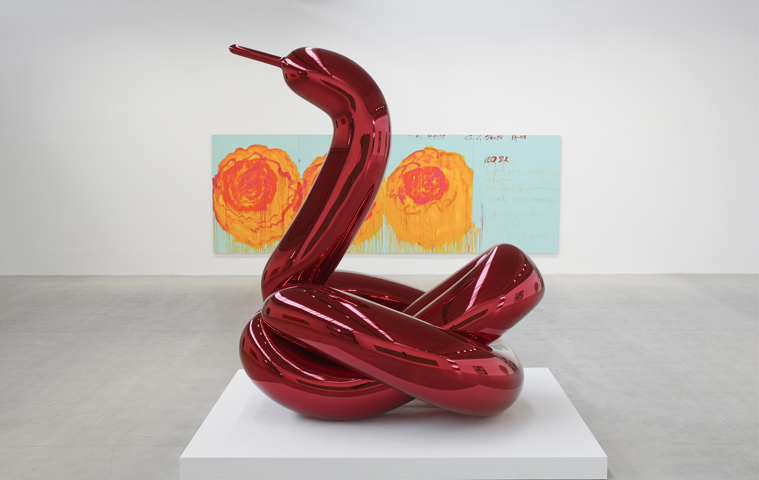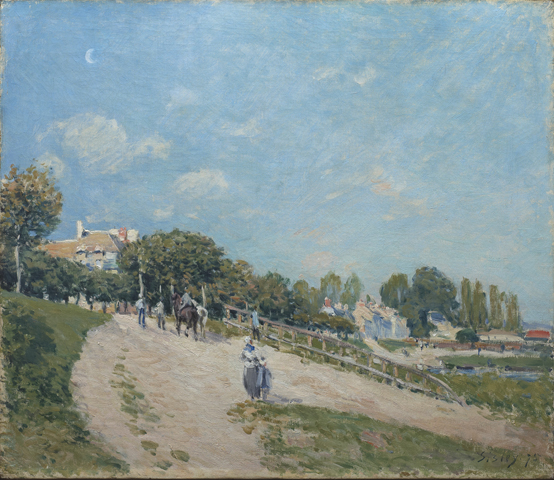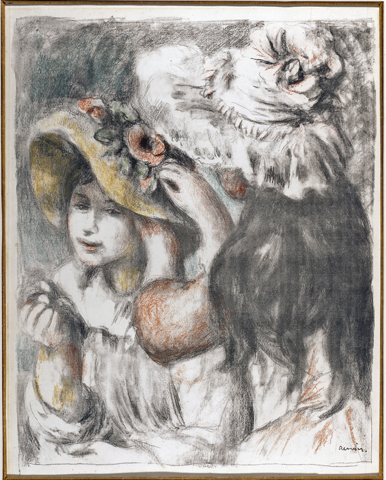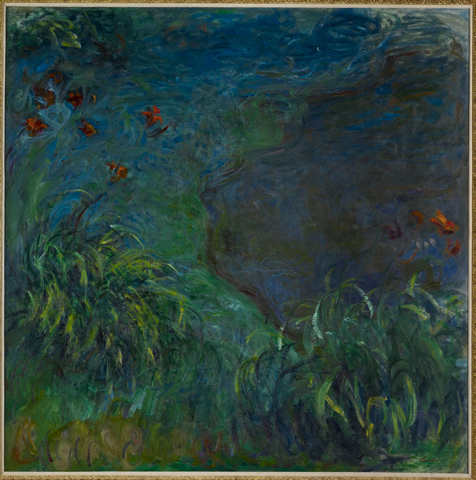Paris, Your Collectors. Gagosian and Marmottan
- (first published on artlifemagazine.com)
- Apr 1, 2014
- 6 min read
Updated: Mar 25, 2020
(Paris.) It’s common knowledge that the importance of the classic European model of publicly financed art museums is constantly diminishing: “Foundation is the new museum.” Traditional sponsorship is “out”, serial collectors no longer wish to donate or permanently let their treasures to an institution owned by everybody else, they seek to keep full control and possession.
At the same time, showing your art is vitally important for a collector no less than for an artist. Every exhibition adds an entry to an artwork’s CV, and we all know how important the CV is nowadays. The more famous the trademark behind the exhibition, the better for a future sale. Temporary exhibitions in public institutions are still important, though they will never take more than a handful of works at a time to mix them with others from different sources. The next level is to present an ensemble, and build up the brand value of “(insert your name here) Collection” as a whole.
Those unwilling to invest in their own famous-architect-designed exhibition space (yet), are ever in search of alternatives. In Paris, spaces like the Maison Rouge regularly serve the demand, and superstar art dealer Larry Gagosian is also set to help out his partners (“customers” is such a nasty word) wherever he can.
It’s an obvious win-win-situation, not only in terms of “partner” retention, but earning the dealer immeasurable marketing value. Gagosian’s Picasso shows in London some years ago (those still following the concept of varied provenance) made museum curators blush about the masterpiece overkill. Today, Gagosian’s fly-in gallery at Le Bourget airport presents An American in Paris, the collection of an unnamed billionaire (should be, some lousy millions would never be enough for this). None of the works are on sale – for now.
Their owner wishes to remain anonymous to the public and press, only insisting on the patriotic moniker that, besides, must not necessarily mean, he (or she, even?) would live in the City of Light – maybe (s)he just dropped by to leave the art. In which case the paintings and sculptures needed to come with a separate cargo flight from whichever storehouse they are usually hibernating in. We are talking about a collection here of which you could only present the inventory list on your cocktail parties. Even living in a Chateau, you'd struggle to find walls big enough for paintings such as Andy Warhol‘s Camouflage (80x400 inches / 203,2x1016 cm) or Cy Twombly’s The Rose (1) (99x291 inches / 252x740 cm).
Gagosian’s remodelled hangar is indeed the perfect exhibition space for not only large, but big-a.. format works like these. Like a Sumo ringer riding a Blue Whale through space, they loose much of their gigantism to the vastness around. The only exception that actually appears not smaller but larger than expected is Jeff Koons’ phallic swan sculpture Ballon Swan (Red), but this seems more of a problem with our expectations than with the actual size (138x94x119 inches / 350x239x302 cm). Reposing in the centre of the hall, it’s the focal point of the show.
What can we deduce about the collector and his tastes from this collection?
Not much, it seems. Which is partly owed to the concept of presenting a “best-of”.
These works’ owner owns a lot more, and only the biggest names have been picked for the show, from Richard Prince to Damian Hirst (a butterfly circle and a medicine cabinet, both reminding us of how talented he is/was, despite all the hype-is-over-talk). Which on the one hand is great, but on the other seems a bit boring. It’s like a share portfolio with only blue chips – now, where’s the thrill in that?
Part of us wished for some work in between whose reproduction we have not seen many times before, or even an artist not belonging to contemporary art’s high nobility. But this is probably – no: it’s certainly unfair. It’s that same feeling that coming from a five course dinner with foie gras, caviar and Kobe beef urges you to stop by at a service station for potato chips and beer (of course, at artlifemagazine, we have to do without the dinner before). We’re absolutely sure, somewhere between all the designer wear in his walk-in wardrobe there’s this one old tattered band shirt more dear to him than all the Haute Couture; but it’s nothing to wear at Gago’s.
Whoever the mysterious mega-collector is, he reminds of a survey, an insurance company has presented lately. It revealed the average art collector as male, aged 40-69, and buying mostly decorative paintings or photos. Critically acclaimed installations and video art are much less favoured. Modern Art has its collectors, too, whilst buying antiques basically makes you a weird outcast.
The continuing affection for Modern Art (should you not be familiar with Art history’s nomenclature: the epoch from ~1860 to ~1945) not only amongst collectors, but even more so amongst the general public makes the success of institutions like the Musee Marmottan-Monet. Musee Marmottan-Monet is located in the former town house of a 19th Century "homme d’affaires", completely preserved with all its furnishings, and it mainly shows Michel Monet’s donation of works from his father Claude, the Rouart Foundation’s collection of more Impressionist paintings and the Wildenstein Collection of Medieval illuminations. It’s an example of the old-school public private art partnership: Take a collection in exchange of a warm handshake and a commemorative badge.
For its 80th anniversary, the museum decided to present Impressionist masterpieces in private possession, borrowed from its circle of acquaintances. The show assembles the who’s who of Modern Art (not all of them Impressionists, obviously): Claude Monet, Camille Pissaro, Berthe Morisot, Camille Corot, Paul Cézanne, Edgar Degas, Alfred Sisley, Édouard Manet, Johan Barthold Jongkind, Pierre-Auguste Renoir, Gustave Caillebotte, and so on. Nothing much to say here: It’s a must visit, if you only remotely like paintings, and find yourself in Paris these days.
Maybe the most beautiful work in the show, and in itself worth the ticket price, is a Monet from 1901: Leicester Square at Night (Collection Larock-Granoff, Paris – Google still finds the 2005 auction result on the Christie’s website).
It’s quite remarkable, how many options a collector has to figure on those labels beside a painting: depending on the size of your ego and your sense of dynasty you will insist on either your initials, your full name or “Family ---“, with or without the addition of your native country and maybe even city of residence; you may further employ a commercial gallery or public institution to act as an intermediary, etc. Some prefer no personally identifiable mention all, a decision leaving them with the choice between "collection particulière" (private collection) and "collection anonyme" (anonymous collection), or maybe a geographic designation (“European collection”), whilst still others prefer to appear in the catalogue’s “thank you” credits, but not on the label of a specific painting.
Obviously, these classics don’t fit into a boring contemporary white space. A Parisian pied-a-terre with patinated wood panels around the historic fireplace is rather obligatory for the responsible collector of Modern Art masterpieces. Having them cruelly removed from their natural habitat, the Marmottan at least painted the walls blood red.
To the museum’s satisfaction, the exhibition attracts large crowds of visitors, many of them appearing in their most annoying form: guided groups. It’s not exactly a pleasure to contemplate a painting with twenty retirees crowded in front, listening to an art history student (or former art history student having failed in finding any decent job) telling anecdotes from the painter’s life and time. It’s in moments like these that you believe the most in Capitalism and the dream of becoming a collector yourself one day. To have an artwork all for yourself might be unsocial, in some cases it’s the only way to fully appreciate it.
You might believe the masses only come for the event, and permanent collections are less overrun, but a visit to the Musée d’Orsay or the Louvre proves the contrary.
Let’s just congratulate and thank the Musée Marmottan-Monet for offering us at least a glimpse on these magnificent works of art, and envy those lucky few who may fully enjoy them at home any time they wish (well, any time they don’t have them let to an institution).
Les Impressionnistes en privé: Cent chefs-d’œuvre de collections particulières, Musée Marmottan-Monet Paris, 13 February - 6 July 2014
Un américain à Paris: Œuvres provenant d’une collection privée, Gagosian Gallery Le Bourget, 28 January – 3 May 2014










Comments